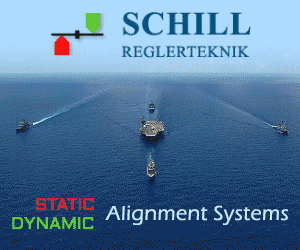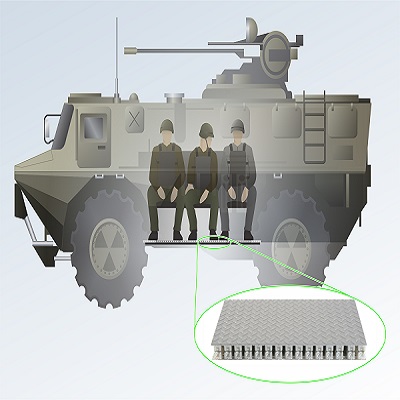Fortifying Naval Forces: Advances in Ballistic Protection Technology

As naval forces continue to face evolving threats, advancements in technology are crucial for fortifying their defenses. In this article, we explore the latest developments in ballistic protection technology, designed to enhance the safety and effectiveness of naval operations.
Importance of Fortifying Naval Forces
Naval forces play a critical role in maintaining peace and security in the maritime domain. However, with the ever-increasing capabilities of modern weapons, it is imperative to fortify these forces with advanced defense mechanisms. Ballistic protection technology serves as a shield, safeguarding naval vessels from potential dangers. By effectively implementing these advancements, naval forces can significantly enhance their defense capabilities, ensuring the safety of crew members and the success of missions.
Historical Development of Ballistic Protection for Naval Forces
The need for ballistic protection in naval operations dates back centuries. Early naval vessels relied on wooden hulls for protection against projectiles. However, as technology advanced, so did the threats faced by naval forces. The development of steel armor in the late 19th century marked a significant breakthrough, providing improved protection against enemy fire. Since then, naval forces have continuously adapted and upgraded their ballistic protection systems to counter emerging threats, such as guided missiles and torpedoes.
Advances in Armor Materials for Naval Vessels
One of the key aspects of ballistic protection technology lies in the development of advanced armor materials. Traditional steel armor, although effective, has its limitations. Recent advancements have led to the introduction of composite materials, such as ceramic and nanomaterials, which offer enhanced protection while reducing weight. These materials are designed to withstand high-velocity impacts and provide superior defense against a wide range of threats. Additionally, the integration of layered armor systems and reactive armor further enhances the overall resilience of naval vessels.
Innovations in Ballistic Protection Systems for Naval Forces
Apart from armor materials, innovations in ballistic protection systems have revolutionized naval operations. State-of-the-art sensors and detection systems are now capable of tracking and identifying incoming threats with incredible precision. This allows naval forces to effectively deploy countermeasures, such as anti-missile systems and decoys, to neutralize potential dangers. Moreover, advancements in active protection systems enable naval vessels to actively intercept and destroy incoming projectiles, further enhancing their survivability.
Case Studies of Successful Implementation of Ballistic Protection Technology
To understand the real-world impact of ballistic protection technology, let's examine a few case studies. The USS Zumwalt, a next-generation destroyer, incorporates advanced ballistic protection systems that provide unmatched defense against various threats. Its stealthy design, combined with layered armor and the latest sensor technology, ensures the safety of the crew and the vessel's mission success. Another notable example is the Swedish Visby-class corvette, which utilizes a unique carbon fiber composite hull for superior protection and reduced radar signature. These case studies demonstrate the effectiveness of ballistic protection technology in enhancing naval forces' capabilities.
Challenges in Implementing Ballistic Protection Technology for Naval Forces
While ballistic protection technology offers significant benefits, it also presents challenges in implementation. One of the primary obstacles is the cost associated with developing and integrating advanced systems into naval vessels. Additionally, the continuous evolution of threats requires regular upgrades, further increasing the financial burden. Moreover, the weight and space constraints on naval vessels must be taken into consideration when incorporating ballistic protection systems, as it may impact their overall performance and maneuverability.
Future Trends and Advancements in Naval Ballistic Protection
The future of naval ballistic protection technology holds immense potential. Researchers and engineers are exploring new materials, such as graphene and metamaterials that offer unprecedented strength and flexibility. Advanced machine learning algorithms and artificial intelligence are being integrated into sensors and detection systems, enabling faster threat identification and response. Moreover, the development of autonomous systems and unmanned naval vessels opens up new possibilities for enhancing ballistic protection and reducing risks to human lives.
Collaborations and Partnerships in Advancing Naval Ballistic Protection Technology
Advancing naval ballistic protection technology requires collaboration and partnerships between various stakeholders. Defense contractors, research institutions, and naval forces work together to develop and test new solutions. These collaborations facilitate knowledge sharing, resource pooling, and the exchange of expertise, leading to accelerated advancements in the field. International cooperation and joint research efforts further contribute to the collective goal of fortifying naval forces against emerging threats.
Conclusion: The Role of Ballistic Protection Technology in Enhancing Naval Forces' Capabilities
In conclusion, ballistic protection technology is indispensable in fortifying naval forces against evolving threats. From historical developments to the latest innovations, advancements in armor materials and protection systems have significantly enhanced the safety and effectiveness of naval operations. Successful case studies highlight the real-world impact of these technologies, while acknowledging the challenges and future trends in the field. Through collaborations and partnerships, naval forces can continue to strengthen their defenses and maintain maritime superiority in an increasingly volatile world.
By incorporating cutting-edge technologies, naval forces can significantly enhance their defense capabilities, ensuring the safety of crew members and the success of missions. From aircraft carriers and destroyers to submarines and patrol boats, the implementation of effective ballistic protection systems is crucial for maintaining maritime superiority in an increasingly volatile world. Join us as we delve into the breakthroughs in ballistic protection technology that are revolutionizing naval operations and bolstering the strength of naval forces around the world.









